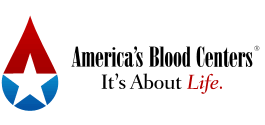You Ought to Tell the Donor That
A young man donated double red cells at our center about a week before running a marathon; not surprisingly, his performance was awful, and he was angry with us. We didn't know he was planning to run, and he didn't know that donating would hurt his performance. After we explained, he calmed down, and said, "Well, you ought to tell the donor that." How right he was. More and more, we realize donors should know much more about donation, in advance, and we are getting more sophisticated about what to tell them, and how.
Both AABB and the Food and Drug Administration list specific information that should be given to the donor, but even with this, the donor has an incomplete picture. The Educational Materials included in the Donor History Questionnaire (http://bit.ly/10Tnloa), for example, relate mostly to donor issues that might pose infectious risk to the recipient, mostly excluding risks to the donor. Over the last year, the ABC Working Group on Donor Information has been developing public and easily understood donor education materials. We have received public comments, and continue to revise the materials. With support from the Foundation for America's Blood Centers, these are now being evaluated by focus groups and will then be revised and tested again.
Our interest is not entirely altruistic. FDA has been interested in improving donor education materials for some years, and discussed at an April 2011 Blood Products Advisory Committee meeting creating "a written statement of understanding" (WSU) that should be provided to donors. As blood collectors, we should be the party to craft this message. After all, who talks to donors more?
FDA originally proposed seven elements of the WSU, and the Working Group has incorporated these. They include some, but not all, of the elements of informed consent. We use a frequently asked questions (FAQ) format, covering the basics of donation, donor qualification, donor screening and the donation itself, risks of donation (including iron issues), infectious disease testing and notification, deferral and the deferral registry, and ways to maximize the experience and minimize harm before, during, and after donation (including eating, drinking, and exercise). We also strongly encourage donors to ask questions and contact us later with any other concerns.
It is not easy to make this material comprehensible, which is why we are seeking professional help. Many formatting and administration issues remain to be worked out. The materials are not short - the days of one informational paragraph on the back of the donor card are gone. Now, however, we can use multimedia, websites, QR codes, smartphone apps, and other sophisticated ways of reaching the donor. In this information-rich age, our donors deserve no less.
Susan Rossmann, MD, PhD, Board Vice President; [email protected]
Posted: 05/24/2013 | By: Susan Rossmann, MD, PhD, Board Vice President | Permalink
< Back to list






